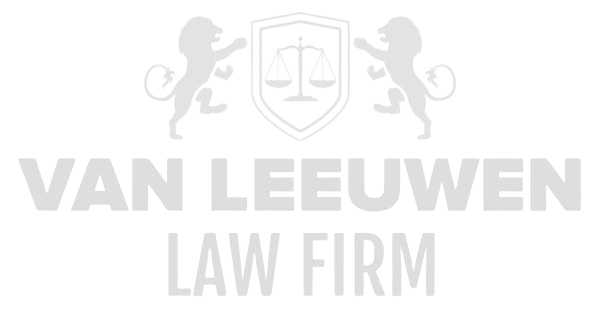The aviation, space, and defense sector represents one of the most strategically vital industries in the modern world. This industry sits at the forefront of technological innovation and is crucial for both economic and geopolitical interests. The complexity of this sector is determined by the enormous diversity of activities, ranging from the development of commercial aircraft to the production of advanced weapons systems, from the launch of satellites to the execution of manned space missions. Each subdiscipline requires profound expertise in physics, engineering, information technology, and strategic policy. The aviation and space sectors contribute to global mobility and technological advancement, while the defense sector plays a critical role in safeguarding national interests and maintaining the stability of international relations.
Moreover, this sector has a significant social and economic impact. Aviation connects continents and facilitates international trade, tourism, and cultural exchange, while space exploration contributes to scientific breakthroughs and technological developments that influence everyday life, such as communication satellites, weather forecasting, and Earth observation. Defense technologies and military capabilities act as a deterrent to conflict and are indispensable for diplomatic and strategic balance. The sector faces fundamental challenges, such as the need for sustainable technologies, the increasing complexity of autonomous and electric systems, and the exponential growth of commercial space initiatives. Simultaneously, evolving geopolitical threats and the emergence of new defense technologies demand continuous innovation, strategic foresight, and international collaboration.
Aviation Industry
The aviation industry encompasses one of the most dynamic and technologically demanding markets in the world, where commercial and private aviation are closely intertwined. Commercial airlines constitute the economic backbone of this industry, responsible for transporting millions of passengers and tons of cargo annually. Managing a diverse fleet, ranging from regional aircraft to intercontinental wide-body planes, requires meticulous coordination of logistics, maintenance, and regulatory compliance. Intense competition among airlines drives continuous innovation in efficiency, cost reduction, and customer service, placing significant pressure on strategic planning, operational excellence, and safety management.
Private aviation addresses a different, specialized demand within the sector, offering tailored transport solutions that combine speed, comfort, and privacy. Business jets and personal aircraft are designed for exclusive and flexible mobility and are often used for rapid corporate travel or personal trips to destinations that are not efficiently served by commercial air networks. This niche market continues to grow steadily, fueled by economic expansion, globalization of business operations, and increasing demand for premium travel services. Technological development in private aviation focuses on comfort, performance optimization, and the safe integration of new systems such as digital navigation and environmentally friendly propulsion.
Sustainability presents a central challenge for the aviation industry. Airlines and aircraft manufacturers invest significantly in developing fuel-efficient aircraft, hybrid and electric propulsion systems, and innovative materials that reduce fuel consumption and minimize environmental impact. Compliance with international environmental and safety standards requires continuous evaluation of operational processes, regulatory adherence, and technological innovation. The strategic combination of economic efficiency with environmental responsibility will determine the future position of aviation companies in an increasingly competitive market and represents a critical factor for the sector’s long-term success.
Space Industry
The space industry is among the most technologically advanced and rapidly expanding segments of the global economy. This sector encompasses a wide spectrum of activities, ranging from scientific research and exploration to the commercial exploitation of space infrastructure. Organizations such as NASA and ESA play a key role in facilitating international cooperation, promoting space research, and developing robust technologies applicable both in space and on Earth. Commercial companies such as SpaceX and Blue Origin have revolutionized the sector by significantly lowering launch costs and attracting substantial private investment in space missions.
Satellite technology forms a core component of the modern space industry. Satellites support essential services in communication, navigation, Earth observation, and scientific research. Developing, constructing, and launching satellites requires not only advanced rocket technology but also precision engineering and long-term strategic planning. Satellites are not merely instruments for economic development and technological innovation; they are also crucial for national security, data acquisition, and monitoring global environmental and climate changes.
Space exploration, including both manned and unmanned missions, is another critical aspect of the industry. Space missions enhance understanding of the universe and provide opportunities to test new materials, technologies, and life-support systems necessary for future lunar and Martian colonies. Maintaining space stations, such as the ISS, demands unparalleled international cooperation and technological expertise, where organizations and commercial companies collaborate to achieve complex logistical, operational, and scientific objectives.
Defense Sector
The defense sector constitutes an integral component of the aviation and space industry and is indispensable for safeguarding national security and military capabilities. This sector encompasses a broad range of activities, from developing advanced weapons systems and vehicles to providing high-tech communication technologies and intelligence services. Military aviation is a core element, with fighter jets, transport aircraft, and drones developed and deployed for strategic operations. Fighter aircraft are equipped with advanced avionics, weapons systems, and stealth technologies and are employed in missions ranging from air superiority and precision strikes to strategic reconnaissance.
Beyond aviation, the defense sector involves the development of land and naval weapon systems, including tanks, armored vehicles, and naval vessels. These systems are designed to meet the complex demands of modern warfare, integrating protection, mobility, and firepower at optimal levels. The continuous development of such technologies requires substantial investment in research and development as well as close collaboration with governments, military institutions, and strategic partners.
Intelligence and communication technologies are vital to the defense sector, enabling the coordination of operations, electronic warfare, and cybersecurity. Securing military networks and collecting strategic information demands ongoing innovation in cyber and communication systems. At the same time, the integration of artificial intelligence and autonomous systems enhances operational efficiency and decision-making, optimizing military capabilities and allowing the sector to adapt to emerging threats.
Trends and Future Developments
The future of the aviation, space, and defense sector will be defined by the continuous integration of technological innovation and international collaboration. Public-private partnerships facilitate the development of advanced technologies while reducing risks and costs through shared investment. These collaborations accelerate the development of new systems and expand markets for both commercial space products and defense-related technologies. Innovation and knowledge-sharing are key drivers, with the ability to anticipate strategic and technological challenges distinguishing leaders from laggards.
Sustainability is increasingly a determining factor in the sector’s future development. In aviation, the focus is on energy-efficient aircraft, hybrid and electric propulsion, and materials that minimize environmental impact. In space, launches are optimized to reduce environmental burden, while defense companies develop technologies that decrease the ecological footprint of military operations. Sustainability strategies are not merely a moral or legal obligation but are also considered essential for long-term economic viability and international legitimacy.
Technological advancement remains the primary engine of evolution within these sectors. The development of advanced materials, artificial intelligence, autonomous systems, and machine learning enables new possibilities for efficiency, performance, and decision-making. In space, the commercial market opens doors to manned missions to the Moon and Mars, while the integration of satellite technologies into telecommunications and navigation drives exponential growth in applications. The sector will continue to evolve through the interaction of innovation, strategic policy, and international collaboration, with success determined by the ability to adapt to technological, ecological, and geopolitical developments.
The combination of technological innovation, sustainability, and international cooperation will determine the future impact and success of aviation, space, and defense companies. The sector is undergoing unprecedented transformation, where new opportunities and challenges emerge rapidly. Companies and governments capable of anticipating effectively, investing strategically, and integrating technological breakthroughs will take the lead in the global arena of aviation, space, and defense, significantly enhancing their influence on both economic and security domains.
Financial and Economic Crime
The aerospace, space, and defense sector represents one of the most strategically vital and technologically sophisticated domains in the global economy. Encompassing the full spectrum of activities from the development and production of commercial and military aircraft to the construction of space technologies and defense equipment, this sector operates at the intersection of immense financial flows, national security interests, and international cooperation. The combination of highly complex technological projects, multi-national contracts, and the substantial sums of money involved makes the sector particularly susceptible to financial and economic crime. Addressing these risks requires not merely procedural compliance but a deep understanding of the structural vulnerabilities and the implementation of robust, sector-wide preventive measures.
The consequences of financial and economic crime in this sector are profound. Beyond immediate fiscal loss, fraudulent activity can compromise the integrity of defense systems, diminish public trust in government contracting, and disrupt technological innovation critical to national security. Each transaction, contract, or innovation initiative represents a potential vector for misuse, making vigilance, transparency, and accountability indispensable components of operational and governance structures. Proactive monitoring, rigorous internal controls, and strategic enforcement are essential to preserving both the financial stability and the strategic credibility of organizations operating in this field.
1. Fraud in Government Contracts and Procurement Processes
Government contracts constitute the lifeblood of the aerospace, space, and defense sector, providing critical funding for aircraft, missile systems, satellite launches, and other advanced technologies. Fraud within these contracts manifests in myriad ways, from the manipulation of procurement procedures to the submission of false claims and the solicitation of bribes or kickbacks to secure or extend contractual agreements. Such acts of deceit undermine not only financial integrity but also the operational reliability of critical defense and aerospace systems.
Fraudulent practices can appear as unwarranted payments, access to confidential information for improper advantage, or the procurement of overpriced or substandard goods and services. These activities have cascading consequences: increased public expenditure, compromised safety of defense assets, and erosion of trust in both corporate and governmental institutions. It is therefore imperative to maintain procurement procedures that are both transparent and rigorously enforced, with strict compliance standards augmented by independent audits and continual oversight.
Preventing and detecting such fraud demands a comprehensive approach, integrating both proactive and reactive strategies. Staff training in ethical standards, automated monitoring systems to flag irregularities, and the establishment of whistleblower protections collectively form a framework capable of deterring misconduct and safeguarding the integrity of government-funded projects.
2. Money Laundering through Defense and Space Projects
The aerospace, space, and defense sector, characterized by large-scale contracts and complex international financial arrangements, is particularly vulnerable to money laundering. Criminal actors exploit the opacity of financial structures, inflated contract values, and convoluted payment systems to launder illicitly obtained funds. Methods may include establishing joint ventures with opaque partners, artificially inflating project budgets, or routing transactions through offshore accounts and tax havens.
The sheer scale and international reach of contracts create fertile ground for these illicit practices. Technical complexity and confidentiality requirements inherent in defense and space projects can obscure irregularities, making it difficult for regulators and auditors to detect suspicious activity. Consequently, both private corporations and government agencies must enforce strict anti-money laundering protocols.
These measures include thorough due diligence procedures for all partners, continuous transaction monitoring, and the timely reporting of suspicious activity to relevant authorities. Strengthening compliance frameworks and fostering a culture of accountability are indispensable to countering the financial vulnerabilities inherent to this high-stakes sector.
3. Corruption and Unethical Practices in Training and Technological Innovation
Technological innovation and specialized personnel training are critical drivers in aerospace, space, and defense operations. Yet, these areas are not immune to corruption and unethical practices. Manipulation in the selection of technology suppliers, trainers, or service providers can distort competition and create unfair advantages, often facilitated through bribery, undue influence, or manipulation of test results and evaluations.
The consequences extend beyond financial loss. Compromised technological integrity or flawed training programs can weaken national security, jeopardize operational effectiveness, and reduce organizational credibility. Therefore, all procurement and partnership decisions must be founded on objective criteria, transparent processes, and independent verification.
Maintaining integrity in this context requires continuous auditing, rigorous oversight, and the integration of ethical standards into corporate governance structures. Companies must ensure that innovation and training programs are evaluated and executed with impartiality, safeguarding both financial investments and the technological reliability of critical systems.
4. Risks of Cybercrime and Digital Breaches
The increasing reliance on advanced digital systems and networked technologies in the aerospace, space, and defense sector has exponentially increased exposure to cybercrime and digital breaches. Cyberattacks can target highly sensitive information, including military strategies, space system designs, or proprietary research data, while also aiming to disrupt critical operational systems such as communication networks, navigation platforms, or command and control infrastructure.
The ramifications of such breaches are severe: operational disruptions, national security threats, and the loss of competitive advantage are all potential outcomes. To mitigate these risks, robust cybersecurity measures are imperative, encompassing multi-layered security protocols, advanced encryption methods, continuous network surveillance, and system monitoring.
Effective risk management also requires comprehensive incident response planning and regular stress testing of security systems. Only through a combination of technological vigilance, continuous training, and proactive threat mitigation can the sector protect its critical assets and maintain operational resilience against increasingly sophisticated cyber threats.
5. Internal Fraud and Unethical Behavior within Aerospace, Space, and Defense Companies
Internal fraud and unethical behavior represent significant threats to companies operating in the aerospace, space, and defense sector. Employees with access to sensitive information or financial resources may engage in misconduct, including misappropriation of property, manipulation of financial records, or conflicts of interest. The impact of such activities can be substantial, resulting in financial losses, compromised confidential data, and reputational harm.
Prevention requires strong internal control systems and clearly articulated ethical guidelines. A corporate culture emphasizing integrity, transparency, and accountability is essential for mitigating risk. Regular internal audits, comprehensive control mechanisms, and a clear reporting framework for suspicious behavior enable organizations to detect and address internal misconduct effectively.
Ultimately, the safeguarding of financial integrity and ethical conduct in the aerospace, space, and defense sector relies on a multidimensional strategy. Combining rigorous internal oversight, continuous employee training, and proactive engagement with regulatory frameworks ensures that organizations remain resilient against fraud, corruption, and unethical behavior while protecting both financial resources and strategic assets.
Privacy, Data, and Cybersecurity
The aviation, aerospace, and defense sectors occupy a position of unparalleled strategic importance, serving as critical pillars of national security, technological innovation, and economic growth. These sectors encompass a vast spectrum of activities, ranging from the design, development, and production of aircraft and spacecraft to the deployment of defense systems and execution of strategic operations. Given their technological sophistication and strategic significance, these sectors face acute challenges in privacy, data protection, and cybersecurity. Breaches in these areas can have far-reaching consequences, affecting operational integrity, national security, and the safeguarding of sensitive information. Addressing these challenges requires a comprehensive, proactive, and methodical approach, integrating technical, procedural, and organizational measures to mitigate risk and ensure resilience.
The implications of failing to secure sensitive data and digital systems are profound. Unauthorized access, data leaks, or operational disruptions can compromise the safety and effectiveness of critical missions, jeopardize national security, and damage the reputation of organizations involved. The magnitude of risk is amplified by the increasing interconnectivity of digital systems, the growth of cyber threats, and the proliferation of sophisticated attacks that exploit both human and technological vulnerabilities. The sectors’ ability to protect sensitive information, maintain operational continuity, and comply with regulatory standards is decisive for both strategic credibility and long-term sustainability.
1. Protection of Sensitive Government and Defense Information
The defense sector manages an extensive repository of highly sensitive information, including military strategies, operational plans, and proprietary technological innovations. Such information is of critical strategic value and must remain protected from foreign adversaries, cybercriminals, and insider threats such as espionage or sabotage.
A concrete example involves data concerning new weapons systems and advanced military technologies. Unauthorized access to this information can provide adversaries with significant strategic advantages. Effective protection requires the deployment of tightly controlled access systems, encryption protocols for data storage and transmission, continuous network monitoring, and proactive detection of suspicious activities.
Defense organizations must also conduct ongoing risk assessments, regularly review and update security protocols, and adapt procedures to evolving threats and vulnerabilities. Integrating these measures into a holistic security framework ensures that sensitive government and defense information remains safeguarded against an increasingly complex threat landscape.
2. Protection of Commercial Aviation Data and Passenger Information
The commercial aviation sector collects and processes vast volumes of data, including passenger personal information, flight details, and aircraft operational records. This data is essential for operational efficiency and safety, but it also represents a prime target for cybercriminals seeking financial gain or unauthorized access.
A specific challenge is protecting passenger data from unauthorized access or misuse. Breaches involving credit card information, travel itineraries, or personal identifiers can result in identity theft, financial loss, and reputational harm. Airlines and airports must therefore implement robust safeguards, including data encryption, secure access controls, and regular security audits.
Compliance with privacy regulations, such as the General Data Protection Regulation (GDPR), is essential. Organizations must transparently communicate how passenger data is collected, stored, and used while maintaining technical and organizational measures that prevent unauthorized access, ensure data integrity, and support the rights of individuals.
3. Cybersecurity of Space Systems and Satellites
The space sector depends on the secure development and operation of satellites, spacecraft, and ground stations. These systems are vital for communication, navigation, scientific research, and national security. Cybersecurity vulnerabilities in these systems can have severe consequences, including operational disruption, data loss, or physical damage to spacecraft.
A prime example is the protection of satellite communications from jamming, interception, or hacking. Cyberattacks can disrupt civilian and military communication networks, impair navigation systems, and undermine strategic capabilities. Addressing these risks requires advanced measures such as encrypted satellite communications, secure software development practices, and continuous network monitoring to detect and respond to threats.
Collaboration with national and international agencies is essential to share intelligence, adopt best practices, and coordinate defenses against evolving cyber threats. Integrating these measures ensures the resilience and reliability of critical space systems in both peacetime and operational contexts.
4. Integrity and Security of Onboard Systems and Software
Modern aviation and space operations rely on complex onboard systems and software, including flight management systems, navigation instruments, and communication modules. Ensuring the integrity and security of these systems is critical for the safe and reliable operation of aircraft and spacecraft.
A concrete example is the cybersecurity of avionics systems within aircraft. Cyberattacks targeting these systems can disrupt flight operations and jeopardize passenger safety. Organizations must enforce stringent development and implementation standards, including comprehensive security testing, regular software updates, and prompt deployment of patches.
Suppliers and manufacturers must also adhere to rigorous security standards to ensure the reliability of all components. Coordinated oversight, verification procedures, and continuous monitoring collectively safeguard operational integrity and reduce exposure to cyber threats.
5. Protection Against Insider Threats and Espionage
Insider threats are a persistent concern across aviation, aerospace, and defense sectors. Employees with access to sensitive information may intentionally or inadvertently compromise data, creating serious security incidents.
A pertinent example is the risk of espionage by personnel who have access to classified military or strategic information. Effective mitigation requires rigorous personnel vetting, strict access control systems, continuous monitoring, and anomaly detection to identify suspicious behaviors.
Training and awareness programs are critical for informing employees about potential risks, responsibilities, and best practices regarding information security. By fostering a culture of vigilance, organizations reduce the likelihood of insider threats and enhance overall cybersecurity resilience.
6. Compliance with Regulations and Industry Standards
Organizations in aviation, aerospace, and defense are subject to stringent national and international regulations and industry standards governing privacy, data protection, and cybersecurity. These frameworks dictate how data must be collected, stored, processed, and secured.
A specific example involves compliance with U.S. regulations such as the International Traffic in Arms Regulations (ITAR) and the Federal Acquisition Regulation (FAR). These mandates require strict security procedures to protect sensitive defense information, with non-compliance carrying legal consequences and reputational damage.
Organizations must remain vigilant, conducting regular audits, updating security practices, and ensuring adherence to evolving regulations. Integrating compliance into everyday operations ensures that data protection measures are both effective and defensible under legal and regulatory scrutiny.
7. Incident Response and Crisis Management
Rapid, effective responses to cyberattacks and data breaches are essential in minimizing impact and maintaining operational continuity. A well-defined incident response and crisis management framework is critical for mitigating damage, protecting sensitive data, and sustaining trust.
For example, a cyberattack on an airline or space organization can disrupt operations, compromise critical information, and erode stakeholder confidence. Comprehensive incident response plans must include isolating affected systems, conducting forensic analyses, communicating effectively with stakeholders, and implementing measures to prevent recurrence.
Success requires trained personnel, advanced detection and response technologies, and clear communication channels. Proactive crisis management not only mitigates immediate damage but also strengthens organizational resilience against future threats, ensuring the continued integrity and security of aviation, aerospace, and defense operations.















